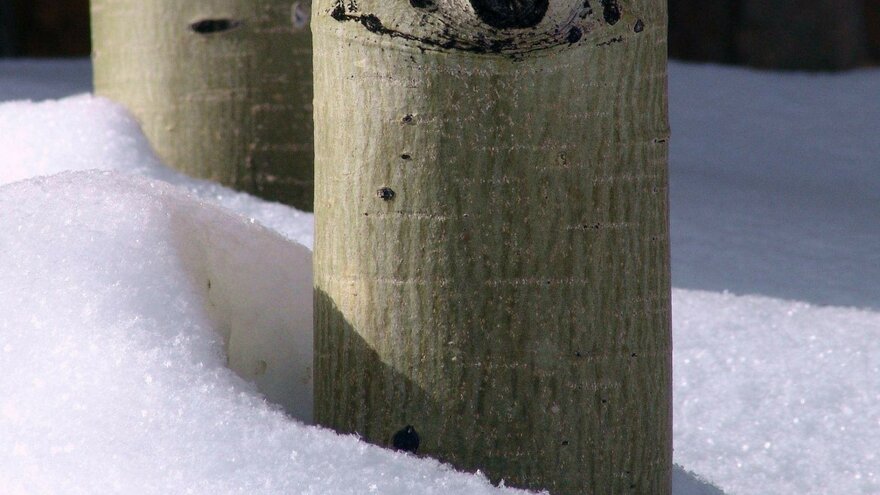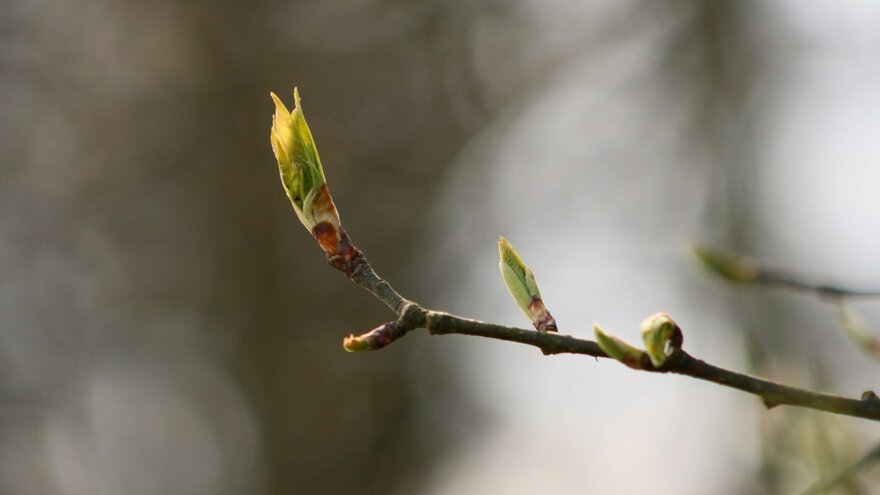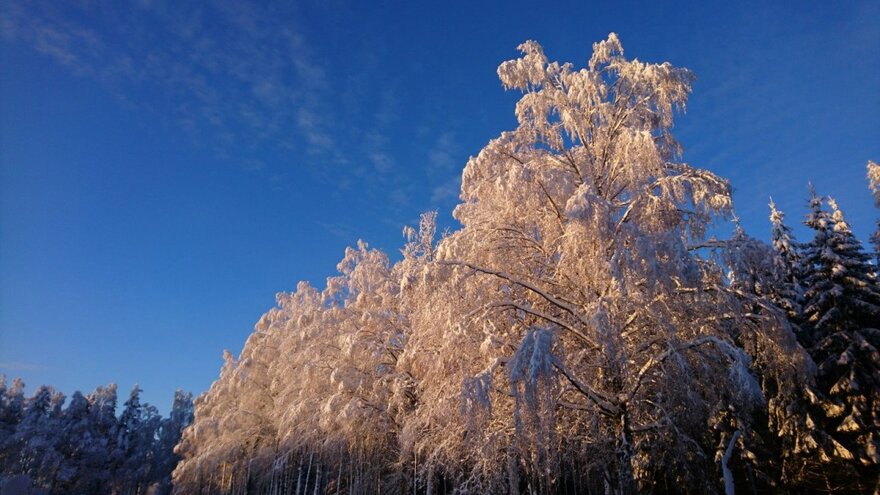In temperate and boreal regions, trees depend on a period of dormancy to survive the cold depths of winter. Scientists have cracked the code determining how trees enter and exit their dormant state.
Thus having prepared their buds
from "Winter Trees" by William Carlos Williams
against a sure winter
the wise trees
stand sleeping in the cold. (7–10)
Take a stroll in the woods on a wintry day, and you will note the dead silence of a world deep in sleep. Trees, like many animals, enter a period of decreased metabolism and growth in winter, in order to survive the cold. In warm-blooded animals, this period of suspended animation is called hibernation, and in trees it is referred to as dormancy.
Before cold temperatures set in, a tree, such as an aspen, must protect its delicate cell structures from frost and damage. It does so by halting growth and forming a protective bud around the shoot apical meristem – the collection of cells that generates new tissues (stem cells), such as leaves. The aspen knows to stop growing when temperatures dip and the days become shorter (decrease in photoperiod). Once growth has stopped, trees must endure a prolonged cold spell before they wake from dormancy. This process is crucial, as otherwise a tree might wake before the winter is over, with disastrous consequences.

But what exactly happens within the aspen, and what causes it to stay dormant? How does it know to keep sleeping throughout the whole winter, and not to wake before spring? This process has been a mystery – until now. Researchers, including BIAS's Torgeir R. Hvidsten, have cracked the code in a study published in Science.
A key plant hormone responsible for regulating dormancy is abscisic acid (ABA), which increases with shortening daylength. The researchers used hybrid aspen as a model organism, to further investigate the role ABA plays. They discovered that ABA stops cells in the meristem from talking to one another, by blocking the channels of communication between them known as plasmodesmata. An increase in ABA produces the sugar callose, which gums up these channels.
Once the communication channels are sealed, the shoot apical meristem can no longer "hear" the song that growth signals give off. Picture trying to listen to a loudspeaker immersed in heavy syrup. Communication is only restored after the plasmodesmata have been exposed to cold temperatures over a long period of time. In other words, only when the longer days of spring arrive is the spell finally lifted. This prevents trees from exiting the dormant state too early, for example if a few warmer days hit in winter.

"The way this was discovered was that plant biologists created ABA mutants – aspen trees that have a reduced response to the ABA signal. We found that these mutants don't create this callose blockage and don't go into dormancy. It is actually a genetic modification of the ABA receptors that was produced, which is quite hard to do in trees. And then we created double mutants, where you see dormancy again," Hvidsten says.
These double mutants had an additional genetic modification that restored ABA responsiveness. This is where Hvidsten and advanced bioinformatics came into play. Wild aspen trees were compared to the ABA mutants in order to see which genes were involved in turning dormancy off and on.
"We could look at which genes actually change expression, to find out which genes are involved in this response," Hvidsten continues. "This gave us the clue as to which genes needed to be turned on or off in the ABA mutant in order to restore dormancy. By creating ABA mutants that don't go into dormancy, and then double mutants where dormancy is restored, we proved that the genes modified in the double mutants are essential genes for dormancy. These genes are directly or indirectly activated/inactivated by the ABA signal."
"It's a very interesting mechanism – instead of shutting the signal off the plants are blocking it. It's a typical, complicated but robust solution that you would expect from evolution. The more you look into biological solutions in detail you realize that this is not how you would design it, but it's how it has evolved. I find that very fascinating," Hvidsten says.

This mechanism is not unique to aspen, as plasmodesmata close in a wide variety of plants, including primitive algae. From an evolutionary perspective this makes sense, as such a process would be crucial to the survival and further development of plant species.
Yet at the same time, it's not likely that all plants use the exact same ABA dormancy mechanism. How does a spruce or pine tree fall asleep and wake up again? The answer could have implications for agriculture and forestry. Says Hvidsten, "This is a very important question for plant biology, and also for crops – if we could modify crops like wheat they could grow longer if it actually gets warmer. And the same with trees, of course, as trees are also a kind of a crop. So then we need to understand these processes."
Click here for further readings:
Facts
Scientific terms
Hibernation:
A time of decreased mobility and metabolism for warm-blooded animals, usually during the winter months.
Dormancy:
A time of decreased metabolism and growth for plants, usually during the winter months.
Shoot apical meristem:
The collection of cells in the shoot of a plant that generates all above-ground tissue growth.
Stem cells:
Cells that can differentiate into other types of cells, and can also produce more of the same stem cells.
Photoperiod:
In a 24-hour cycle, the amount of daylight time.
Abscisic acid:
A plant hormone involved in regulating dormancy.
Plasmodesmata:
A channel between plant cells that allows them to communicate with each other.
Callose:
A plant sugar produced in response to abscisic acid (see above).
Double mutant:
An organism which has mutations in two genes of interest. This can be used to discover how each gene relates to a specific trait.
